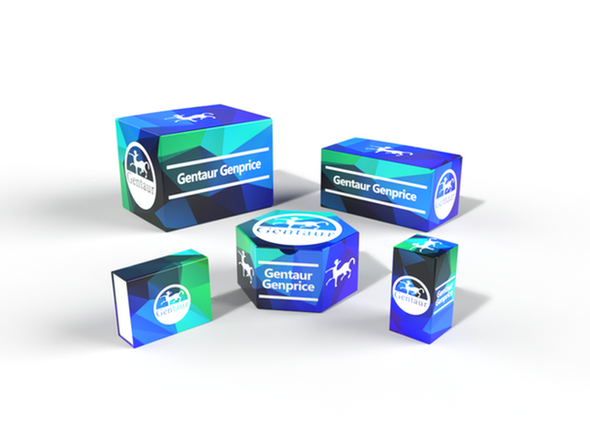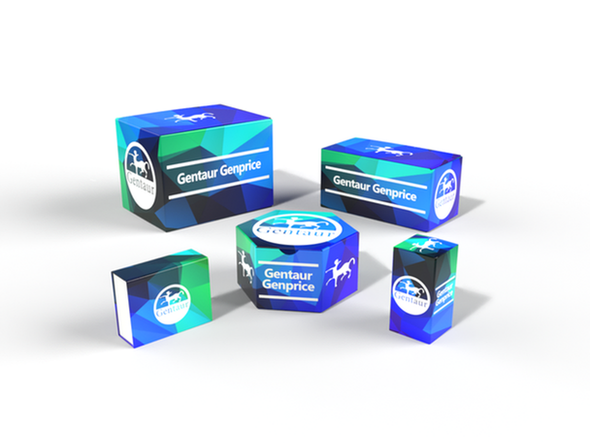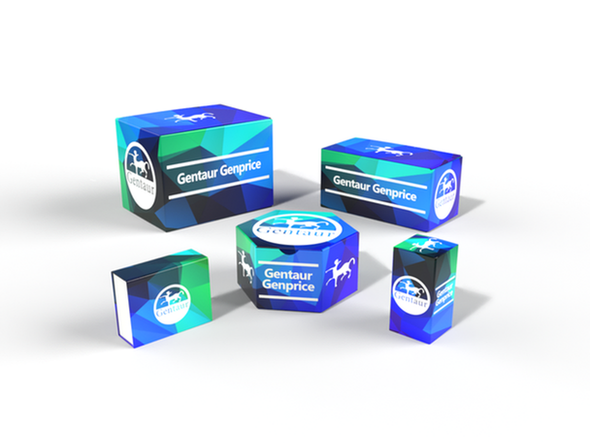Description
MAP2K4 Antibody, KO Validated | 15-727 | Gentaur UK, US & Europe Distribution
Host: Rabbit
Reactivity: Human, Mouse, Rat
Homology: N/A
Immunogen: Recombinant fusion protein containing a sequence corresponding to amino acids 300-399 of human MAP2K4 (NP_003001.1) .
Research Area: Cell Cycle, Immunology, Neuroscience, Signal Transduction
Tested Application: WB, IHC, IF
Application: WB: 1:500 - 1:2000
IHC: 1:50 - 1:100
IF: 1:50 - 1:100
Specificiy: N/A
Positive Control 1: SH-SY5Y
Positive Control 2: BT-474
Positive Control 3: MCF-7
Positive Control 4: mouse thymus
Positive Control 5: mouse liver
Positive Control 6: rat liver
Molecular Weight: Observed: 44kDa
Validation: Antibody is Knockout validated.
Isoform: N/A
Purification: Affinity purification
Clonality: Polyclonal
Clone: N/A
Isotype: IgG
Conjugate: Unconjugated
Physical State: Liquid
Buffer: PBS with 0.02% sodium azide, 50% glycerol, pH7.3.
Concentration: N/A
Storage Condition: Store at -20˚C. Avoid freeze / thaw cycles.
Alternate Name: MAP2K4, JNK activating kinase 1, JNK-activated kinase 1, JNK-activating kinase 1, MAPK/ERK kinase 4, MAPKK4, JNKK1, PRKMK4, SAPKK1, SEK1, MEK4, MKK4, SAPK/ERK kinase 1, SERK1, JNKK, MAP kinase kinase 4, MAPKK 4, MEK 4, SAPK kinase 1, SAPKK-1, SKK1
User Note: Optimal dilutions for each application to be determined by the researcher.
BACKGROUND: This gene encodes a member of the mitogen-activated protein kinase (MAPK) family. Members of this family act as an integration point for multiple biochemical signals and are involved in a wide variety of cellular processes such as proliferation, differentiation, transcription regulation, and development. They form a three-tiered signaling module composed of MAPKKKs, MAPKKs, and MAPKs. This protein is phosphorylated at serine and threonine residues by MAPKKKs and subsequently phosphorylates downstream MAPK targets at threonine and tyrosine residues. A similar protein in mouse has been reported to play a role in liver organogenesis. A pseudogene of this gene is located on the long arm of chromosome X. Alternative splicing results in multiple transcript variants.


![[KO Validated] MAP2K4 Polyclonal Antibody [KO Validated] MAP2K4 Polyclonal Antibody](https://cdn11.bigcommerce.com/s-1rdwiq712m/images/stencil/590x590/products/567911/573754/gentaur-genprice__04902.1663435466__38299.1663436130__89686.1663845072.png?c=1)
![[KO Validated] MAP2K4 Rabbit pAb [KO Validated] MAP2K4 Rabbit pAb](https://cdn11.bigcommerce.com/s-1rdwiq712m/images/stencil/590x590/products/96199/96738/gentaur-genprice__26005.1661610467__29809.1661628092__75433.1661676199__77988.1661684280__64362.1661692443__06777.1661944012.png?c=1)


